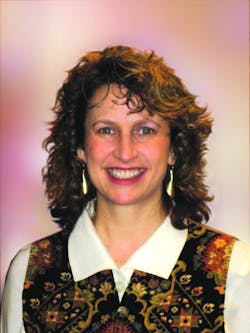
To my mind, the excitement of biophotonics research is surpassed only by its transfer to the larger world, where it can benefit humanity. So I was grateful for the opportunity to join the industrial advisory board (IAB) and Annual Program Formulation Meeting of the Center for Biophotonic Sensors and Systems (CBSS) at Boston University (BU) on April 30, 2013. BU is the center's lead site, and University of California-Davis (UCD) is a partner site. After welcome statements by Tom Bifano, Director of the Boston University Photonics Center (BUPC) and CBSS, and Dennis Matthews, Director of both UCD's CBSS site and Center for Biophotonics Science and Technology (CBST), some of the member company representatives weighed in on their reasons for being involved with the center. A common theme was the value of networking and connecting with a pool of future employees: One member noted that it costs on average $60K to hire a new PhD employee, while CBSS membership allows them to "'test drive' students we may want to hire" for $50K—a relative bargain.
CBSS is an Industry & University Cooperative Research Center (I/UCRC) of the National Science Foundation (NSF), and the only focused on biophotonics. Of the 61 I/UCRCs, roughly 1,000 program-engaged students graduated in 2011 and more than 30% were hired by member companies, explained Larry Hornak, Program Director, Engineering Directorate, in NSF's Industrial Innovations and Partnership Division.
The I/UCRC concept was developed to foster partnerships focused on industrially relevant fundamental research; strong industrial support of, and collaboration in, research and education; and direct transfer of university-developed ideas, research results, and technology to U.S. industry. Among I/UCRC industry members, 52 percent are large businesses, 26 percent are small, and 15 percent are federal members. These members leverage NSF's $16.4M in program funding to the tune of $130M.
According to Teri Behrens, a veteran NSF center evaluator, professors are sometimes wary because they fear the program will impose an overly commercial direction to their work when, in fact, just the opposite is true. "The process keeps the research basic—at pre-competitive levels," she said. Each of the member companies has proprietary ideas about where they will want to take the technology commercially.
The CBSS meeting was largely devoted to technology presentations by professors and board member evaluations of those projects. Consensus building on project selection involves voting, where each member gets 10 votes to distribute among research projects. Votes were tallied and followed by a closed meeting of the IAB, during which members reached a final recommendation for funding. As membership grows, more projects can be funded (each typically runs ~$100K)—so current members want newcomers to join. For more on the center, see www.bu.edu/cbss.

Barbara Gefvert | Editor-in-Chief, BioOptics World (2008-2020)
Barbara G. Gefvert has been a science and technology editor and writer since 1987, and served as editor in chief on multiple publications, including Sensors magazine for nearly a decade.